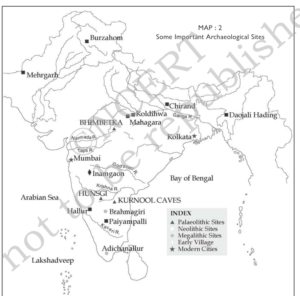Topics
- Global Report on the Food Crises 2023
- Rashtra Aarogya Nidhi
- What are Marine Heat Waves (MHWs)?
- Donanemab: A promising drug for Alzheimer’s
- Adjournment Motion in Indian Parliament
- Ludwigia Peruviana
- Zero FIR
- Copper Age
Global Report on the Food Crises 2023
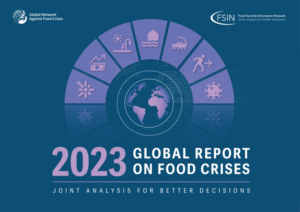
Details
- In 2022, it was estimated that approximately 691 million to 783 million individuals worldwide experienced hunger, which was significantly higher than pre-pandemic levels in 2019.
- Notably, the two pandemic years did not witness an increase in food insecurity, but the data for 2022 indicated a concerning rise.
- The Global Report on Food Crises (GRFC) is produced by the Food Security Information Network in collaboration with the Global Network against Food Crises, involving 16 partners to assess acute food insecurity in various countries.
What is Food Security?
- Food security, as defined by the World Food Summit in 1996, ensures that all individuals have consistent physical and economic access to sufficient, safe, and nutritious food, meeting their dietary requirements and preferences for a healthy and active life.
- The prevalence of moderate or severe food insecurity is determined using the Food Insecurity Experience Scale (FIES).
Key findings:
- The Global Report reveals that hunger is no longer increasing at an alarming rate globally, but it remains significantly above pre-COVID pandemic levels.
- Progress towards achieving Sustainable Development Goal 2—Zero Hunger—is still far from being achieved.
- Urbanization emerges as a critical factor affecting food security in the context of the year under assessment.
- In 2022, there was no improvement in global food insecurity compared to the previous year, with around 2.4 billion people estimated to lack access to adequate food. This represents an increase of 391 million individuals from 2019.
- Global hunger, measured by the prevalence of undernourishment, remained relatively stable between 2021 and 2022 but remained significantly higher than pre-COVID-19 levels, affecting about 9.2% of the global population in 2022, up from 7.9% in 2019.
- The report indicates a decline in stunting among children under five years of age, decreasing from 204.2 million in 2000 to 148.1 million in 2022.
- Child wasting also decreased from 54.1 million in 2000 to 45 million in 2022. However, the number of overweight or obese children increased slightly from 33 million (5.3%) in 2000 to 37 million (5.6%) in 2022.
- The report’s revised analysis shows that nearly 3.2 billion people worldwide could not afford a healthy diet in 2020, with a slight improvement observed in 2021.
The cost of a healthy diet increased globally by 6.7% between 2019 and 2021, and it projects that approximately 600 million people will suffer from chronic undernourishment by 2030.
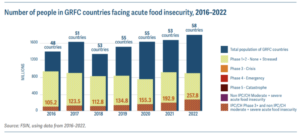
Key drivers of food insecurity:
Several factors contribute to food insecurity, including economic slowdowns due to lockdowns and pandemic-related disruptions in 2020, which led to job losses and reduced incomes.
The war in Ukraine, unfavorable governmental policies, and increasing urbanization driving changes in agrifood systems also play significant roles.
Way forward:
- The report’s significance lies in its ability to identify vulnerable population groups, providing evidence to inform decision-making and effective actions through targeted policies and programs.
- Emphasizing the importance of nutrition, the report urges governments, civil society, and the private sector to prioritize sound nutrition in their policies and initiatives.
- To enable access to healthy diets, the report recommends supporting healthier food outlets and incentivizing shops to sell fresh and minimally processed foods.
- Addressing the consumption of street foods by around 2.5 billion people worldwide, the report suggests addressing infrastructure and regulatory gaps to improve their nutritional safety and quality.
- Investments in rural infrastructure, such as quality rural and feeder roads, warehousing, cold storage, electrification, digital tools, and water supply, are essential to support links between small farms and small and medium enterprises.
- The report emphasizes the fundamental role of local governments in implementing policies to make healthy diets available and affordable for all, leveraging multilevel and multi-stakeholder mechanisms effectively.
Rashtrya Aarogya Nidhi
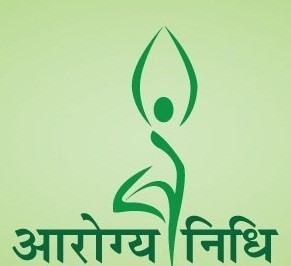
Context: The Union Minister of State for Health and Family Welfare addressed the Lok Sabha and provided information about the Rashtra Aarogya Nidhi.
Introduction
Rashtrya Aarogya Nidhi (RAN) is a central sector scheme that provides financial assistance to poor patients living below the poverty line for treatment of major life-threatening diseases at government hospitals or institutes.
Objectives
The main objectives of RAN are:
- To provide one-time financial assistance to poor patients for treatment of specified diseases.
- To reduce the burden of out-of-pocket expenditure on health care for poor households.
- To improve access and quality of health care for poor patients.
Components
RAN has three components:
| Component | Description | Maximum Assistance |
| RAN | Financial assistance for treatment of life-threatening diseases relating to heart, kidney, liver, etc. at Government hospitals/institutes having Super Specialty facilities. | Rs. 15 lakhs |
| Health Minister’s Cancer Patient Fund (HMCPF) | Financial assistance for treatment of cancer at Regional Cancer Centres (RCCs)/ Tertiary Care Cancer Centres (TCCCs) and State Cancer Institutes (SCIs). | Rs. 15 lakhs |
| Financial assistance for poor patients suffering from rare diseases | Financial assistance for specified rare diseases for treatment at Government hospitals/institutes having Super Specialty facilities. | Rs. 20 lakhs |
Eligibility Criteria
- The patient should belong to a family living below the State/UT-wise threshold poverty line.
- The patient should be suffering from a major life-threatening disease/cancer/rare disease as specified by the Ministry of Health and Family Welfare.
- The patient should be undergoing treatment at a government hospital/institute having Super Specialty facilities.
- The patient should not be covered by any other scheme or insurance that provides financial assistance for the same purpose.
- The patient should not be an employee of the Central/State Government or Public Sector Undertaking.
Marine Heat Waves (MHWs):

Introduction
Marine Heat Waves (MHWs) are prolonged periods of excessively warm ocean temperatures that can occur in various regions around the world, including the north-east Pacific, southern Indian Ocean, the Atlantic, and the Mediterranean. These events, as reported by Mercator Ocean International, have been increasing in frequency and intensity in recent years, posing significant consequences for marine ecosystems and industries.

Measurement of MHWs
MHWs are measured based on specific criteria:
- Threshold Criteria: A marine heatwave is characterized by seawater temperatures exceeding a seasonally-varying threshold, often the 90th percentile, for at least 5 consecutive days.
- Continuity of Events: Successive heatwaves with gaps of 2 days or less are considered part of the same MHW event.
Causes of Marine Heatwaves
- Air-Sea Heat Flu: Ocean currents and air-sea heat flux play significant roles in the buildup of warm water in specific areas.
- Influences of Wind and Climate Modes: Wind patterns can enhance or suppress MHWs, influencing their occurrence in certain regions.
- Large-Scale Climate Drivers: Events such as the El Nino Southern Oscillation (ENSO) can contribute to the formation of MHWs.
- Intensification with Global Warming: Rising global temperatures have resulted in longer-lasting, more frequent, and intense MHWs in recent decades.
- Human Influence: Approximately 87% of MHWs can be attributed to human-induced warming, as greenhouse gas emissions cause oceans to absorb significant amounts of heat.
- Oceans as Heat Sink: Oceans have absorbed 90% of the additional heat caused by greenhouse gas emissions since 1850, leading to an increase in global mean sea surface temperature.
Impacts of Marine Heatwaves
- Ecosystem Structure: MHWs can disrupt ecosystem structure, favoring certain species while suppressing others.
- Kelp Forest Destruction: In instances like the 2010-2011 MHWs along the Western Australian coast, kelp forests were devastated, fundamentally altering the local ecosystem.
- Economic Losses: Fisheries and aquaculture industries can suffer economic losses due to MHWs.
- Vulnerability of Temperature-Sensitive Species: Species such as corals are highly vulnerable to MHWs. For example, the 2016 marine heat waves in northern Australia caused severe bleaching of the Great Barrier Reef.
Impact on Marine Ecosystems
The consequences of MHWs on marine ecosystems are severe and wide-ranging:
- Catastrophic Effects: MHWs have led to the death of numerous marine species, altered migration patterns, and caused coral bleaching, endangering coral reefs.
- Coral Bleaching: High ocean temperatures in the tropical Atlantic and Caribbean in 2005 led to a massive coral bleaching event, impacting over 80% of surveyed corals and having severe consequences for marine life.
- Invasive Species and Ecological Imbalance: MHWs promote the growth of invasive alien species, disrupting marine food webs and posing threats to wildlife, as seen with incidents like whale entanglements in fishing gear.
Consequences for Humans
- Amplifying Storms: Higher Ocean temperatures associated with MHWs make storms like hurricanes and cyclones stronger, leading to severe weather events and flooding.
- Threat to Coral Reefs: Coral reefs are crucial for half a billion people who depend on them for food, income, and protection, but MHWs pose a grave threat to these ecosystems, impacting human livelihoods.
- Socio-Economic Impact: Coastal communities, in particular, are vulnerable to the socio-economic impacts of MHWs, which affect fisheries and tourism.
Donanemab: A promising drug for Alzheimer’s
Context
Donanemab, a promising drug developed by Eli Lilly, has shown significant potential in slowing cognitive decline in individuals with early-stage Alzheimer’s disease, providing hope for improved quality of life for patients and their families.
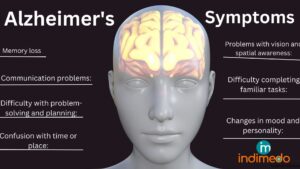
What is Alzheimer’s Disease?
- Alzheimer’s disease is an irreversible and progressive neurological disorder characterized by the toxic accumulation of beta-amyloid protein in the brain.
- These protein deposits form clumps, disrupting brain cell connections and leading to cognitive issues such as memory loss.
- The exact cause of Alzheimer’s is not fully understood but is believed to involve a combination of genetic, environmental, and lifestyle factors.
- Risk factors include family history, genetic mutations, head injuries, cardiovascular disease, and certain lifestyle choices.

Donanemab: An Antedote
Developed by Eli Lilly, Donanemab is a drug designed to treat individuals with early-stage Alzheimer’s disease. It targets one of the common hallmarks of the condition: amyloid plaques in the brain.
Breakthrough in Slowing Cognitive Decline
- With an estimated 14 million cases of dementia, including Alzheimer’s, expected in India by 2050, finding effective treatments is urgent.
- In a phase III trial, Donanemab has demonstrated promising results, slowing cognitive decline by 35% compared to a placebo.
- This milestone represents significant progress in Alzheimer’s research, as it is the second drug, within a year, to show effectiveness in checking cognitive decline in early-stage Alzheimer’s patients.
Limitations
- It is essential to recognize that Donanemab and the previously mentioned drug do not stop or reverse Alzheimer’s disease.
- However, slowing cognitive decline can significantly improve the quality of life for affected individuals and their families.
Adjournment Motion
Context
During the monsoon session of Parliament, Opposition parties demanded discussions on alleged sexual assaults in Manipur and ongoing ethnic violence, leading to the Lok Sabha’s adjournment. Let’s explore the various motions raised in the Indian Parliament and their significance.
(A) Short Duration Discussion (Rule 193)
- Applicability: This procedure is available in both Lok Sabha and Rajya Sabha.
- Description: A short-duration discussion can take place when the Chairman or Speaker deems a matter urgent and of significant public importance. The discussion can last for a maximum of two and a half hours.
(B) Motion with a Vote (Rule 184)
- Applicability: This motion is relevant in Lok Sabha.
- Description: A motion can be admitted if it meets certain conditions, such as not containing defamatory statements, being on a matter of recent occurrence, and not being pending before any statutory authority or court of enquiry.
- The Speaker can allocate a time period for the discussion. This type of motion involves a vote to determine Parliament’s position on the issue and requires the government to follow Parliament’s decision.
(C) Adjournment Motion
- Applicability: The adjournment motion is relevant only in Lok Sabha and is not available in Rajya Sabha.
- Description: An adjournment motion is moved to discuss a “definite matter of urgent public importance” with the Speaker’s consent.
- The notice for this motion must be given before 10 AM on a given day to the Lok Sabha Secretary-General. The motion must meet specific criteria to be admitted.
- While the passage of an adjournment motion does not require the government to resign, it is considered a strong censure of the government.
Ludwigia Peruviana
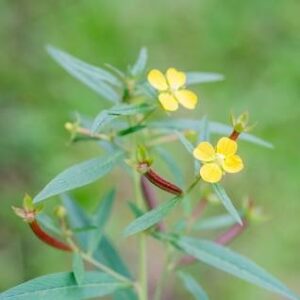
Name and Origin:
Ludwigia Peruviana, commonly known as primrose willow, hails from Central and South America. It is believed to have been introduced to various regions as an ornamental plant, mainly due to its delicate, tiny yellow flowers.
Physical Characteristics:
- This aquatic plant boasts a towering height of up to 12 feet and displays attractive pale yellowish flowers.
- As a species thriving in water bodies, it poses a particular threat to swampy areas worldwide.
Rapid Spread and Invasive Nature:
- Ludwigia Peruviana has gained a notorious reputation for its rapid spread, particularly in wetlands, where it outcompetes native vegetation.
- Notably, it has been identified as one of the 22 priority invasive plants in Tamil Nadu.
Environmental Impact:
- The aggressive growth of Ludwigia Peruviana has severe consequences for elephants and other wildlife.
- As it takes over wetland habitats, it disrupts the perennial foraging grounds that elephants rely on for sustenance.
- Moreover, its pervasive presence diminishes the growth of essential grasses and native plants, consequently reducing the available food sources for animals in the affected areas.
- The alarming invasion of Ludwigia Peruviana calls for urgent attention and management strategies to mitigate its impact on both the environment and vulnerable wildlife populations, particularly elephants.
Zero FIR

What is Zero FIR?
- A Zero FIR is a type of written complaint that can be lodged by any police station for an alleged offense that falls under the jurisdiction of another police station.
- This concept is defined in Section 154 of the Code of Criminal Procedure (CrPC).
- The main objective of a Zero FIR is to facilitate swift action and prevent unnecessary delays in registering complaints, particularly in cases of crimes against women, as recommended by the Justice Verma Committee after the 2012 Delhi gang rape case.
- When a complaint is received by a police station, and the offense does not fall under its jurisdiction, they can register a Zero FIR.
- The Zero FIR is then transferred to the appropriate police station with jurisdiction over the case.
- Upon receiving the Zero FIR, the relevant police station registers a fresh FIR and commences the investigation into the alleged offense.
- This ensures that victims’ complaints are promptly addressed and proper actions are taken without any hindrance.
Copper Age
Context: Ancient human genomic data suggests Copper Age farmers and steppe pastoralists may have interacted 1,000 years earlier than thought.

Key Highlights –
- Previous genomic analyses identified two major genetic turnover events in Western Eurasia: one linked to farming spread (7,000-6,000 BC) and another from steppe pastoralist expansion (3,300 BC).
- The Copper Age followed, characterized by metallurgy, wheel and wagon use, and horse domestication. The period between the Copper Age decline (around 4,250 BC) and pastoralist expansion lacked clear understanding.
- Recent study suggests early contact and admixture between Copper Age farmers in southeast Europe and Neolithic groups from southern Ukraine’s steppe (starting around 5,500 BC).

- Admixture was localized to the NW Black Sea region during the fourth millennium BC and didn’t impact southeastern European hinterland. Chalcolithic Age
The Chalcolithic period
- The Chalcolithic period, also called the Copper Age, bridges the gap between the Neolithic and Bronze Age.
- It is characterized by the use of both stone tools and early metalworking, specifically copper.
- In India, it lasted from around 2000 BC to 700 BC. Ø The Chalcolithic culture was mainly observed in the pre-Harappan phase, extending to the post-Harappan phase in some areas.
- People lived in rural settlements near hills and rivers.
- Prominent farming communities of this age included Kayatha, Ahar or Banas, Malwa, and Jorwe.
- They practiced animal husbandry and agriculture, cultivating wheat, rice, millet, lentil, urad, moong, and other pulse crops.
